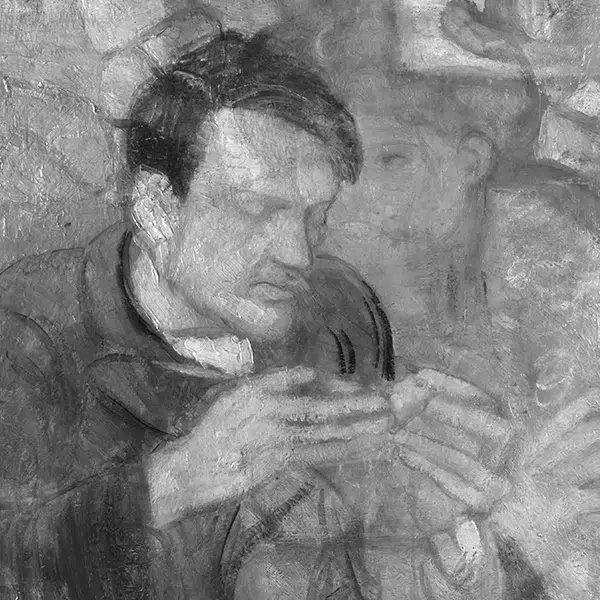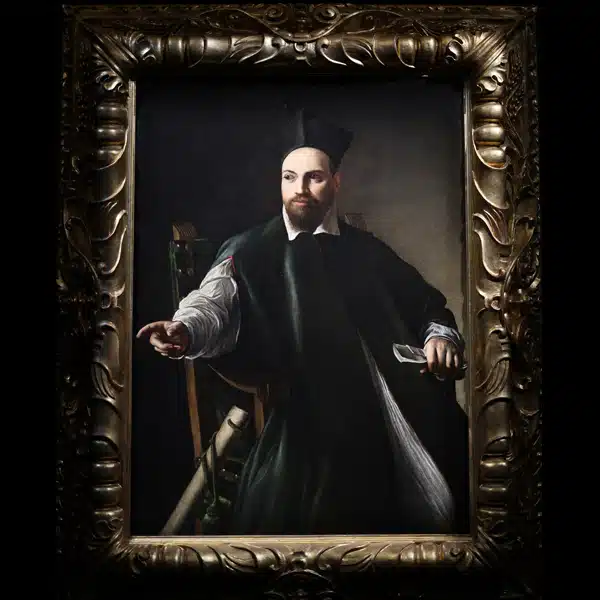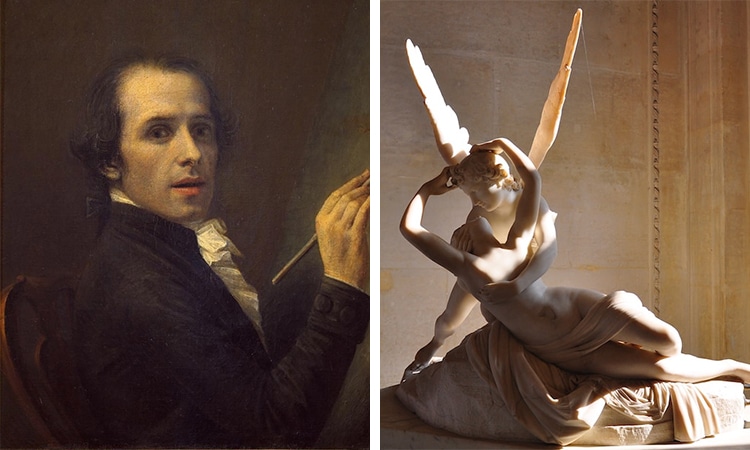
This post may contain affiliate links. If you make a purchase, My Modern Met may earn an affiliate commission. Please read our disclosure for more info.
In the mid-1700s, artists looked back to ancient Greece and Rome for creative inspiration. This movement became known as Neoclassical, and it was founded on classical ideals including an interest in simplicity and harmony. And while Jacques-Louis David became the painting pioneer of this style, an Italian named Antonio Canova led the field of sculpture.
Known for his silkenly polished pieces inspired by mythology, his mastery of the medium was well known during his lifetime. At the height of his fame, Canova's patrons stretched across all of Europe and included Napoleon Bonaparte and his family. Later in life, he was even commissioned by Americans to make a sculpture of George Washington for the state of North Carolina.
Here, we will learn more about Canova and the characteristics of his art.
Full Name | Antonio Canova |
Born | November 1, 1757 (Possagno, Republic of Venice) |
Died | October 13, 1822 (Venice, Kingdom of Lombardy-Venetia) |
Notable Artwork | Psyche Revived by Cupid's Kiss (1787), The Three Graces (1814–1817) |
Movement | Neoclassical |
Who was Antonio Canova?
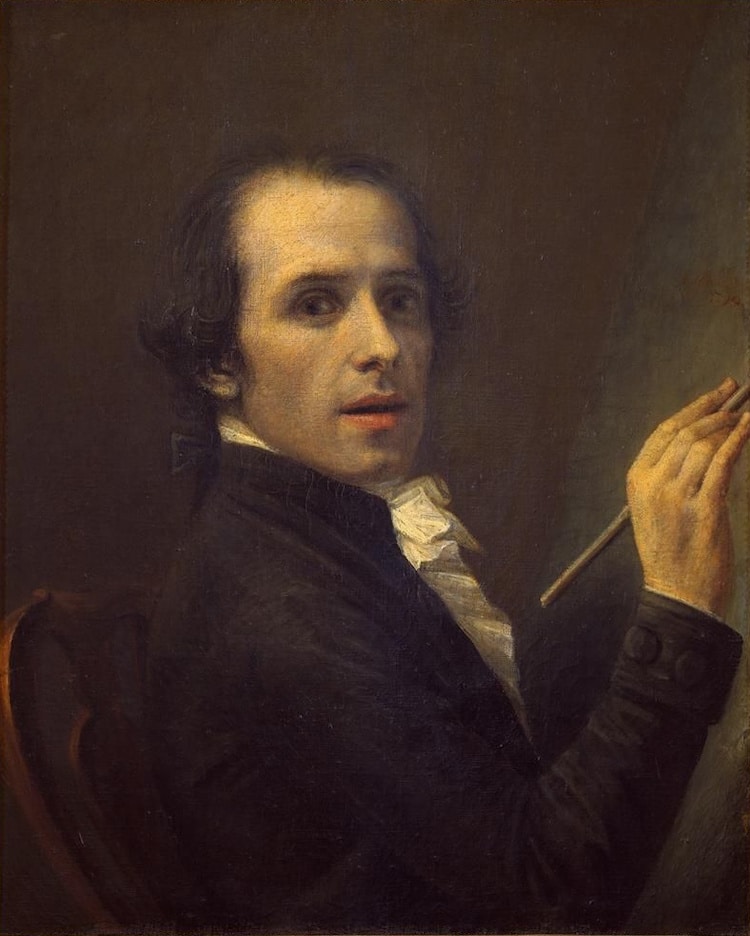
Antonio Canova, “Self-Portrait,” 1790 (Photo: Wikimedia Commons, Public domain)
Originally from the Venice Republic, Antonio Canova (1757–1822) is considered to be the greatest Neoclassical sculptor whose work defined the style. He created numerous large-scale marble sculptures inspired by classical mythology with idealized figures in graceful compositions. In particular, his sculptures are known for their polished finish, which Canova would spend weeks or even months polishing with a pumice stone.
What was Neoclassical Art?
Neoclassicism is an 18th-century art movement based on the ideals of art from Rome and Ancient Greece. Its interest in simplicity and harmony was partially inspired by a negative reaction to the overly frivolous aesthetic of the decorative Rococo style. The discovery of Roman archaeological cities Pompeii and Herculaneum (in 1738 and 1748, respectively) helped galvanize the spirit of this movement.
Characteristics of Neoclassical Sculpture
Neoclassical sculpture shared many similar values to its painting counterpart. Artists of this style created sculptures inspired by classical and mythological subject matter. They produced idealized figures with smooth contouring, resembling the statues from Athens and Rome, often on a life-size scale.
Idealized Figures
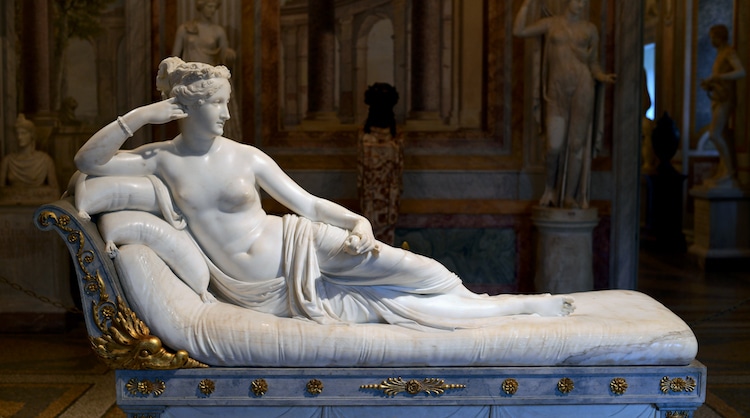
Antonio Canova, “Venus Victrix,” 1804 (Photo: Architas via Wikimedia Commons, CC BY-SA 4.0)
Like their ancient inspirations, Neoclassical sculptures feature idealized human figures. In Canova's sculpture Venus Victrix, for example, he merged the likeness of Napoleon's sister Pauline Borghese with a version of a Venus sculpture, which is often used to convey the standard of beauty.
Smooth Contouring
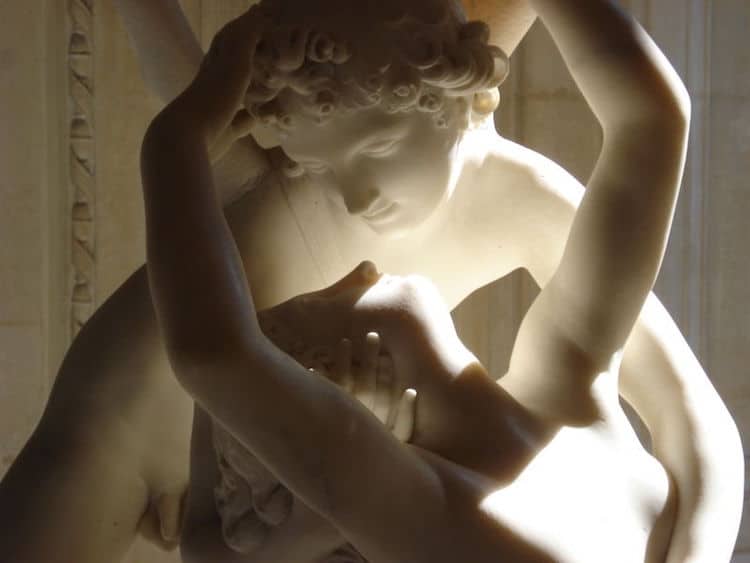
Antonio Canova, Detail of “Psyche Revived by Cupid’s Kiss,” 1788 (Photo: Alexanderinvictus via Wikimedia Commons, Public domain)
Another feature of Neoclassical sculptures, for which Canova is best known, is smooth contouring. When viewed up close, it is easy to see how much time he put into polishing the surface of the marble to achieve a silken appearance on the skin. As a result, his works glisten in the light.
Life-Size Scale
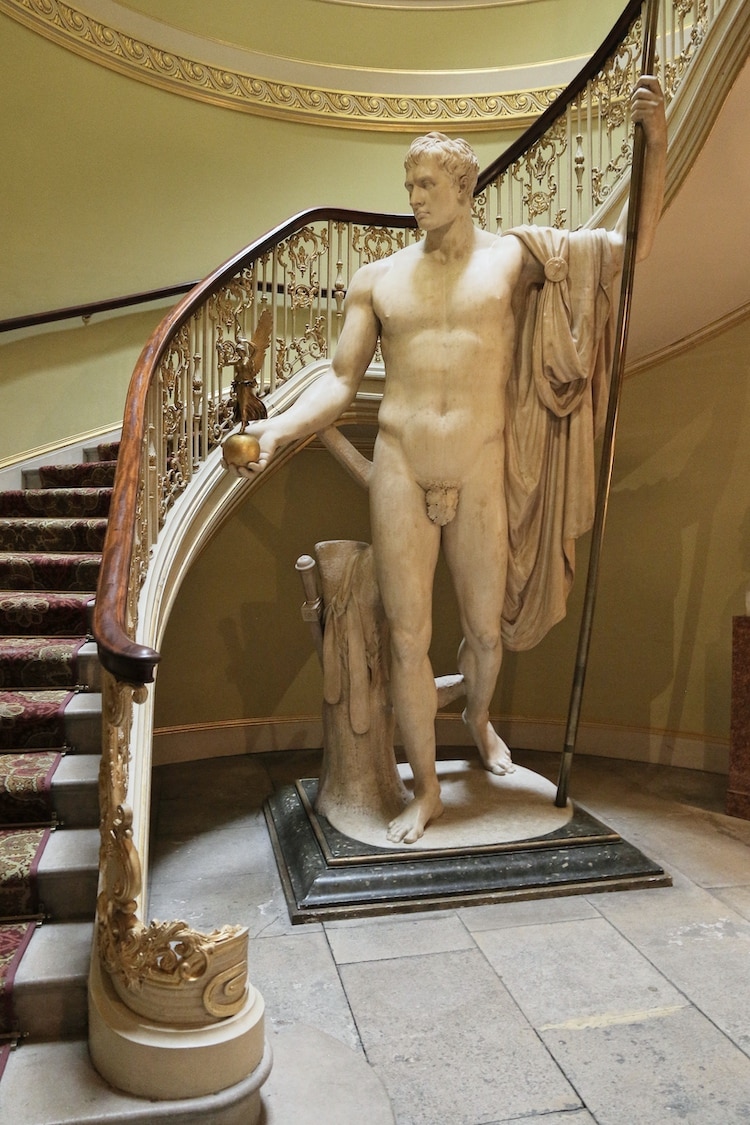
Antonio Canova, “Napoleon as Mars the Peacemaker,” 1806 (Photo: Jörg Bittner Unna via Wikimedia Commons, CC BY-SA 3.0)
Neoclassical sculptures were often made on a grand scale to create a sense of importance and echo their classical inspirations. Canova's work Napoleon as Mars the Peacemaker was over 11 feet, celebrating Napoleon's greatness in the form of the Roman god of war, Mars.
Famous Works of Art
Psyche Revived by Cupid's Kiss (1787)
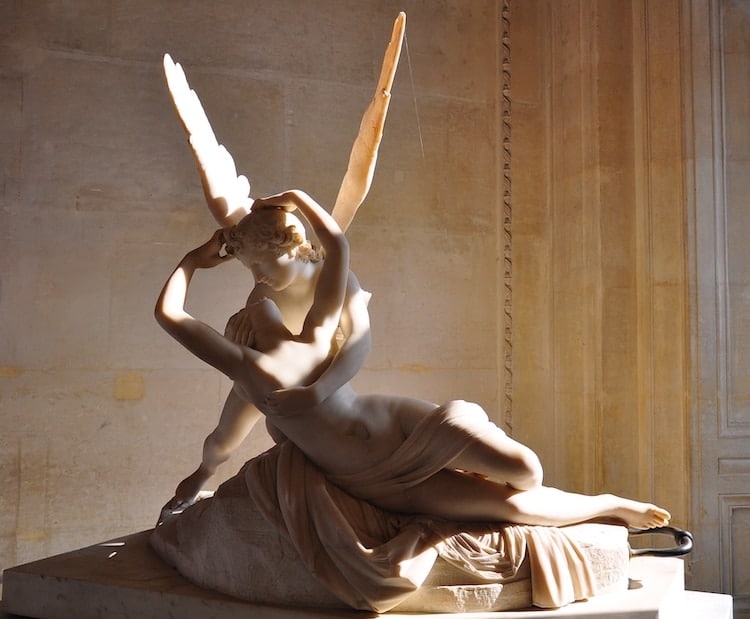
Antonio Canova, “Psyche Revived by Cupid’s Kiss,” 1787 (Photo: Kimberly Vardeman via Wikimedia Commons, CC BY-SA 2.0)
Psyche Revived by Cupid's Kiss is one of Neoclassicism's most romantic sculptures. Inspired by the love story of Cupid, the Roman god of love (adapted from the Greek Eros), and Psyche, a human-turned-goddess, this marble masterpiece was carved by Canova in 1787.
The piece depicts the touching moment Psyche—who was put into a deep, death-like sleep after opening a forbidden box— is awakened by a kiss from Cupid, her husband. Canova skillfully captures the heightened and humanist emotion of the scene by paying special attention to the lifelike expressions and intimate positioning of the figures.
“Cupid lifts his beloved Psyche in a tender embrace, his face close to hers,” explains the Louvre, the museum where the piece is currently housed. “Psyche lets herself sink slowly backward, languorously taking her lover’s head between her hands.”
The Three Graces (1814–1817)
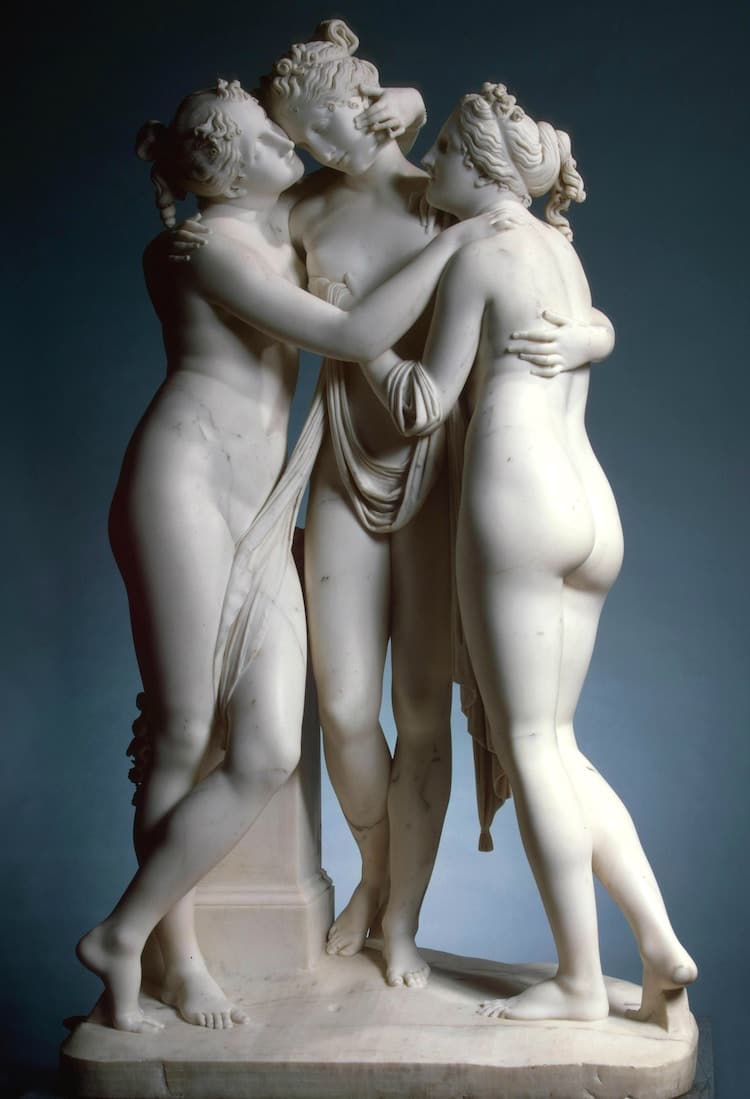
Antonio Canova, “The Three Graces,” 1814–1817 (Photo: Wikimedia Commons, CC BY-SA 3.0)
The Three Graces embodies the ideals of the Neoclassical style. Made from a single slab of marble, it features three elegant female figures standing together with their arms thrown around each other. Rather than adorn his sculpture with ornate details like the Baroque aesthetic, Canova utilized the beauty of the harmonious composition.
The three idealized figures create a pyramid with the central woman standing tallest among them. Their skin has been polished to great effect, making it seem like their skin glows in the light.
This work was so beloved that two versions were made. The first was created for Empress Josephine—now housed in the Hermitage Museum—and the other was commissioned by John Russell, the Duke of Bedford, and is jointly owned by the Victoria and Albert Museum and the National Galleries of Scotland.
Books about Antonio Canova
Want to learn more about Antonio Canova's art and life? We've put together a selection of books that go into more detail about his artistic legacy.
Frequently Asked Questions
Who was Antonio Canova?
Antonio Canova was an Italian Neoclassical sculptor from the mid-1700s and early 1800s. He is credited with pioneering the Neoclassical style in sculpture, creating elegant statues inspired by ancient Greek and Roman art.
What was Antonio Canova known for?
Antonio Canova is known for his Neoclassical marble sculptures, including Psyche Being Revived by Cupid's Kiss and the Three Graces.
Related Articles:
Why Rembrandt Is Considered One of Art History’s Most Important Old Masters
30 Famous Paintings From Western Art History Any Art Lover Should Know
Fall in Love with 5 of Art History’s Most Romantic Masterpieces











































































